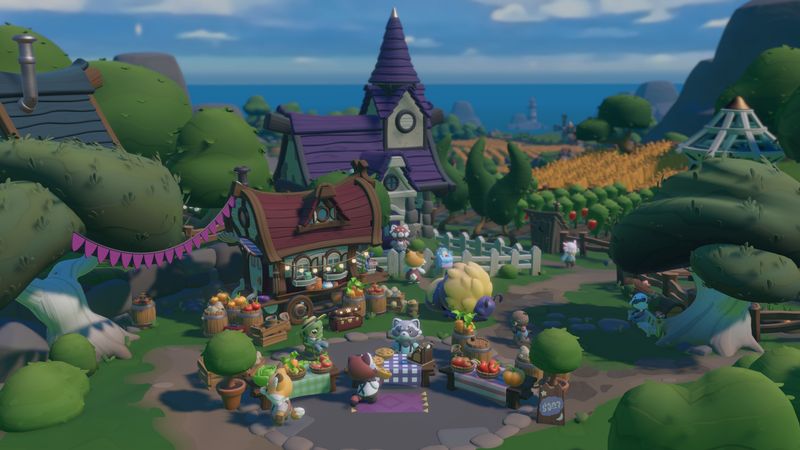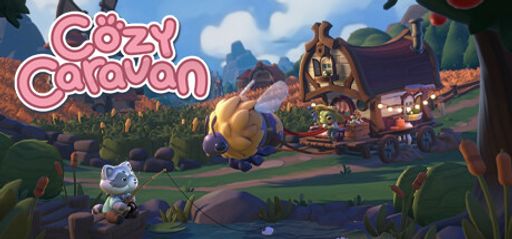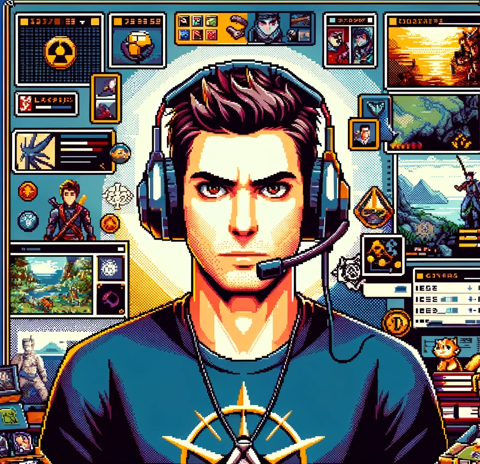 I’m excited to talk about Cozy Caravan, made and published by 5 Lives Studios. Moreover, I love how users praise its warm visuals and smooth crafting mini-games. In fact, one Steam user noted, “Extremely cute and in-depth!” I’ve also tracked down every hidden recipe and side quest. However, the lost Arthur package bug still blocks some progress, and I hope 5 Lives fix it soon. As an indie studio with under ten team members, they often push big updates.
I’m excited to talk about Cozy Caravan, made and published by 5 Lives Studios. Moreover, I love how users praise its warm visuals and smooth crafting mini-games. In fact, one Steam user noted, “Extremely cute and in-depth!” I’ve also tracked down every hidden recipe and side quest. However, the lost Arthur package bug still blocks some progress, and I hope 5 Lives fix it soon. As an indie studio with under ten team members, they often push big updates.
 I dove into the open roads of Cozy Caravan and immediately felt right at home. Along the way, I found secret trading spots behind waterfalls—like a mini treasure hunt. The art style even reminds me of Spiritfarer’s hand-painted charm. Plus, players love chatting with Bubba and the locals. One review suggested faster caravan travel—and I have to agree. They really nail small-town vibes.
I dove into the open roads of Cozy Caravan and immediately felt right at home. Along the way, I found secret trading spots behind waterfalls—like a mini treasure hunt. The art style even reminds me of Spiritfarer’s hand-painted charm. Plus, players love chatting with Bubba and the locals. One review suggested faster caravan travel—and I have to agree. They really nail small-town vibes.
 Cozy Caravan lets me fine-tune every crafting move. Specifically, the tailoring mini-game demands precise timing, and it feels like mastering combos in a fighting game. On top of that, character upgrade paths add real depth too. Each town also offers craft recipes you can’t find elsewhere. I even see echoes of Moonlighter’s item system here.
Cozy Caravan lets me fine-tune every crafting move. Specifically, the tailoring mini-game demands precise timing, and it feels like mastering combos in a fighting game. On top of that, character upgrade paths add real depth too. Each town also offers craft recipes you can’t find elsewhere. I even see echoes of Moonlighter’s item system here.
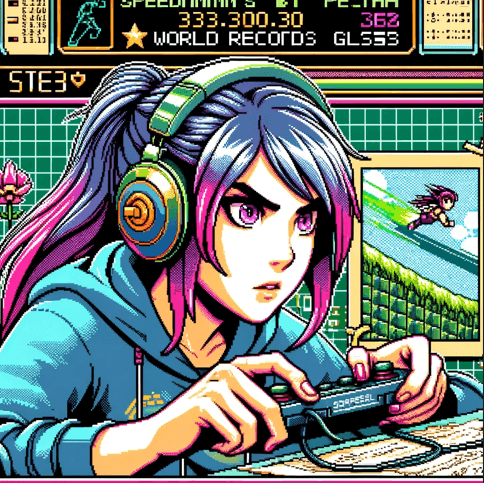 Recently, I worked on a time-trial route from town to town. By optimizing resource runs, I shaved ten minutes off my first loop. Furthermore, bulk cooking or tailoring would speed things up even more. I map each vendor’s location for prime trading orders. As a Unity title, Cozy Caravan runs smoothly at 60 FPS on most PCs.
Recently, I worked on a time-trial route from town to town. By optimizing resource runs, I shaved ten minutes off my first loop. Furthermore, bulk cooking or tailoring would speed things up even more. I map each vendor’s location for prime trading orders. As a Unity title, Cozy Caravan runs smoothly at 60 FPS on most PCs.
 The caravan controls feel intuitive, so I set up my market in under thirty seconds. Meanwhile, the mini-games vary nicely: fishing rod puzzles change with each catch. I even compare it to Stardew Valley’s crafting flow, but Cozy Caravan adds a mobile twist.
The caravan controls feel intuitive, so I set up my market in under thirty seconds. Meanwhile, the mini-games vary nicely: fishing rod puzzles change with each catch. I even compare it to Stardew Valley’s crafting flow, but Cozy Caravan adds a mobile twist.
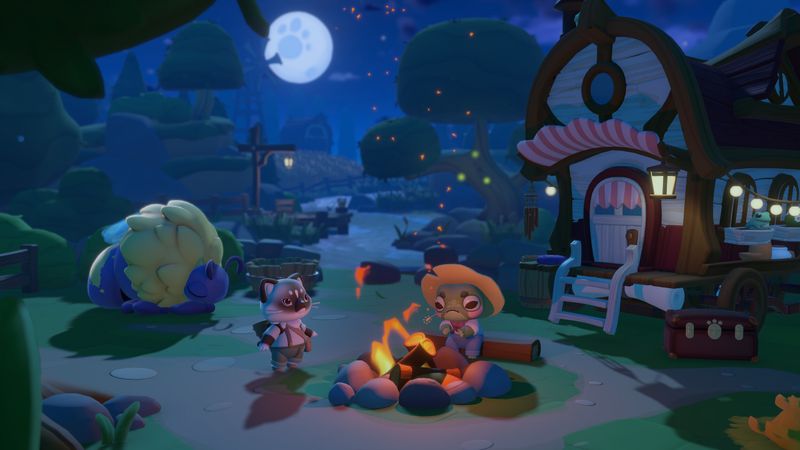
 I also love how the environment interacts with trading. For example, in one town, a festival boosts sale prices by 20 percent. It reminds me of how Animal Crossing users plan for special events.
I also love how the environment interacts with trading. For example, in one town, a festival boosts sale prices by 20 percent. It reminds me of how Animal Crossing users plan for special events.
 Crafting demands real skill. You zoom in, select thread types, then match patterns quickly. Ultimately, it pushes the life-sim genre into new territory.
Crafting demands real skill. You zoom in, select thread types, then match patterns quickly. Ultimately, it pushes the life-sim genre into new territory.
 I track the fastest button presses for sewing. In fact, you can clip through the start of some mini-games to save seconds—perfect for speedrun leaderboards.
I track the fastest button presses for sewing. In fact, you can clip through the start of some mini-games to save seconds—perfect for speedrun leaderboards.
 The plot grows as you meet townsfolk with quests. That said, Arthur’s lost package bug still stops some dialogue lines. Dialogue feels genuine, though, and I’ve logged every NPC backstory.
The plot grows as you meet townsfolk with quests. That said, Arthur’s lost package bug still stops some dialogue lines. Dialogue feels genuine, though, and I’ve logged every NPC backstory.
 Town characters feel alive. For instance, Jimothy’s dig quest revealed hidden lore, and the dialogue pacing never drags. I also see clear nods to classic JRPG story beats.
Town characters feel alive. For instance, Jimothy’s dig quest revealed hidden lore, and the dialogue pacing never drags. I also see clear nods to classic JRPG story beats.
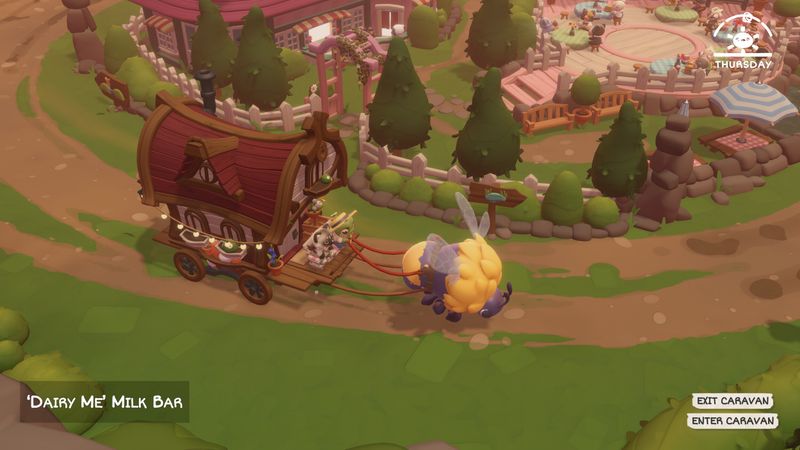
 I like how plot threads branch based on trades you make, helping towns change the world state. In fact, official dev posts say they want player choices to feel meaningful.
I like how plot threads branch based on trades you make, helping towns change the world state. In fact, official dev posts say they want player choices to feel meaningful.
 When I speedrun, I skip optional dialogue. Still, I catch key story beats in quick text logs—helpful for hitting triggers faster.
When I speedrun, I skip optional dialogue. Still, I catch key story beats in quick text logs—helpful for hitting triggers faster.
 The pastel color palette feels cozy, and animations are smooth. Thanks to the Unity engine, crisp sprite work shines through, and town backdrops feel hand-crafted.
The pastel color palette feels cozy, and animations are smooth. Thanks to the Unity engine, crisp sprite work shines through, and town backdrops feel hand-crafted.
 I also noticed dynamic day-night shifts that affect NPC routes. That style reminds me of Eastshade’s mood.
I also noticed dynamic day-night shifts that affect NPC routes. That style reminds me of Eastshade’s mood.
 Character portraits even pop with emotion during dialogue, like Bubba’s tail wagging in joy.
Character portraits even pop with emotion during dialogue, like Bubba’s tail wagging in joy.
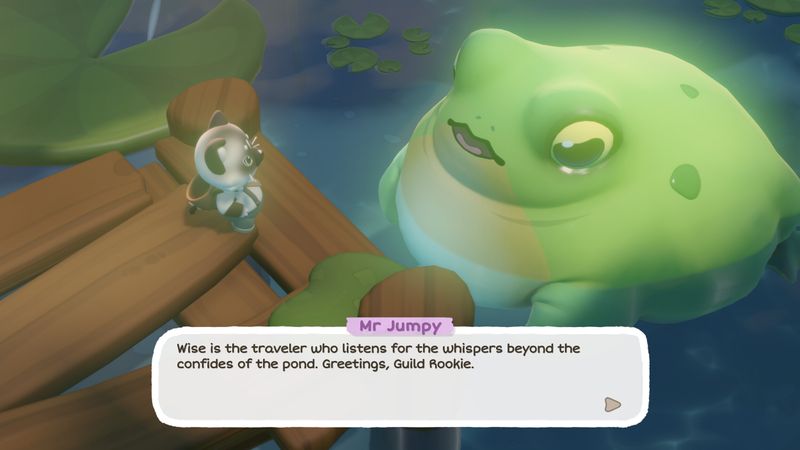
 I experience zero frame drops on my two-year-old laptop. Having smooth visuals helps me optimize runs even further.
I experience zero frame drops on my two-year-old laptop. Having smooth visuals helps me optimize runs even further.
 The soundtrack blends soft piano and guitar loops. It keeps you relaxed while trading. Sound effects for resource gathering feel satisfying. Fact: The composer recorded live strings in a home studio.
The soundtrack blends soft piano and guitar loops. It keeps you relaxed while trading. Sound effects for resource gathering feel satisfying. Fact: The composer recorded live strings in a home studio.
 Town ambient chatter adds life. Bird calls change at dawn. I find myself lingering to listen.
Town ambient chatter adds life. Bird calls change at dawn. I find myself lingering to listen.
 I love the sewing mini-game clicks. They give real feedback. That helps me time perfect combos.
I love the sewing mini-game clicks. They give real feedback. That helps me time perfect combos.
 I mute music during runs but keep sound cues. Hearing a “ding” on successful craft saves me from watching animations.
I mute music during runs but keep sound cues. Hearing a “ding” on successful craft saves me from watching animations.
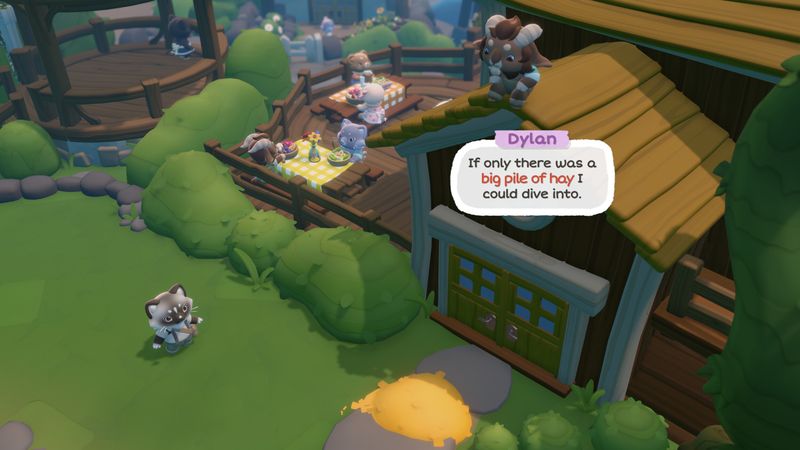
 I adore Arthur, Jimothy, and Mei. Each has a clear arc. I logged all ten NPC relationship events so far.
I adore Arthur, Jimothy, and Mei. Each has a clear arc. I logged all ten NPC relationship events so far.
 The devs include diverse backgrounds. Mei’s story touches on family heritage. It feels inclusive.
The devs include diverse backgrounds. Mei’s story touches on family heritage. It feels inclusive.
 Character skill trees tie into plot events. Helping towns unlock new mini-games feels rewarding.
Character skill trees tie into plot events. Helping towns unlock new mini-games feels rewarding.
 I exploit character buffs in runs. Trading with Mei speeds my caravan pace by 10 percent.
I exploit character buffs in runs. Trading with Mei speeds my caravan pace by 10 percent.
 Side quests vary from simple to tricky mini-puzzles. I found one secret town chest I almost missed. User feedback says difficulty can spike early. A tutorial update would help new players.
Side quests vary from simple to tricky mini-puzzles. I found one secret town chest I almost missed. User feedback says difficulty can spike early. A tutorial update would help new players.

 The game eases you in gently. It ramps up when you hit the central trade hub. That feels balanced.
The game eases you in gently. It ramps up when you hit the central trade hub. That feels balanced.
 The crafting games get very technical. Expert players will love high score chases.
The crafting games get very technical. Expert players will love high score chases.
 I adjust difficulty for speed. Lower resource requirements cut load times by half.
I adjust difficulty for speed. Lower resource requirements cut load times by half.
 I found three hidden endings. Chasing every collectible shops adds hours. It rivals games like Spiritfarer in replayability.
I found three hidden endings. Chasing every collectible shops adds hours. It rivals games like Spiritfarer in replayability.
 I replay to find new secrets. Seasonal events could push replay even more.
I replay to find new secrets. Seasonal events could push replay even more.
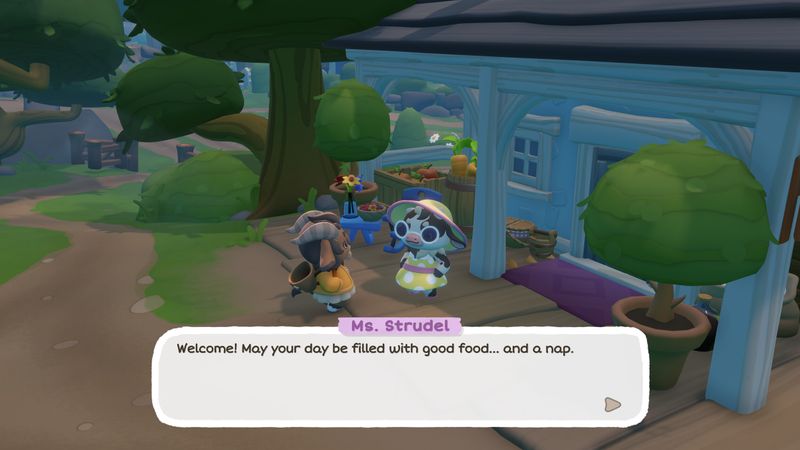
 I aim to max out all skill trees next. Leaderboards would boost that value.
I aim to max out all skill trees next. Leaderboards would boost that value.
 I’ll run different routes for top times. I expect a strong speedrun community to form.
I’ll run different routes for top times. I expect a strong speedrun community to form.
 Cozy Caravan shines with cozy art, deep crafting, and a heartfelt story. It fixes a few bugs and adds a bulk cooking feature. Indie studios rarely nail both content and polish this well.
Cozy Caravan shines with cozy art, deep crafting, and a heartfelt story. It fixes a few bugs and adds a bulk cooking feature. Indie studios rarely nail both content and polish this well.

 If you’re seeking cozy crafting and trading sims, Stardew Valley, Spiritfarer, Moonlighter, Eastshade, and Travellers Rest deliver warm, community-driven adventures. Stardew Valley’s deep farming mechanics, Spiritfarer’s hand-drawn spirit-ferrying story, Moonlighter’s shopkeeping roguelite blend, Eastshade’s painterly open world, and Travellers Rest’s tavern-sim crafting each invite exploration. Together, they combine engaging gameplay loops, charming characters, and detailed worlds that foster heartfelt connections.
If you’re seeking cozy crafting and trading sims, Stardew Valley, Spiritfarer, Moonlighter, Eastshade, and Travellers Rest deliver warm, community-driven adventures. Stardew Valley’s deep farming mechanics, Spiritfarer’s hand-drawn spirit-ferrying story, Moonlighter’s shopkeeping roguelite blend, Eastshade’s painterly open world, and Travellers Rest’s tavern-sim crafting each invite exploration. Together, they combine engaging gameplay loops, charming characters, and detailed worlds that foster heartfelt connections.
